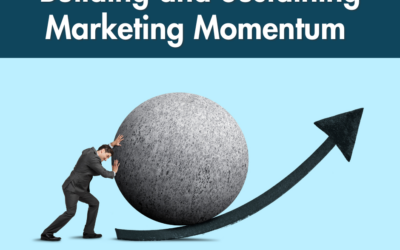Is Your Website Falling Short on Leads?
If your website isn’t generating leads, you’re not alone. There could be various reasons behind this, like SEO issues, a weak social media strategy, or a non-responsive design that Google doesn’t like. We frequently advocate for the importance of Search Engine Optimisation for any website, but there are many other areas of importance that also need to be considered. In a recent study, we looked into which websites were lacking the best practices that are needed to attract traffic that can potentially covert into leads.
The results were astounding! 80% of the websites in the study suffered at least half of the following common mistakes:
1. Thin content:
Thin content doesn’t provide value to your readers and can even mislead them. From Google’s perspective, it’s considered low-quality. Think of it as having a conversation with someone who only gives vague answers – not ideal! Having too little content on your website can have several negative effects:
- Visitors searching for information may leave if they find only surface-level content, causing frustration.
- Search engines like Google favour websites with comprehensive, helpful content. Thin content doesn’t meet these criteria.
- Thin content is sometimes copied from other sources, harming your credibility and SEO rankings.
- Insufficient content can lead to high bounce rates, indicating to search engines that your site doesn’t meet user needs.
2. Not Secure:
In today’s digital world, website security is essential. It has a huge impact on trust, data protection, and business integrity. In our interconnected online world, the risk of data breaches and cyberattacks is ever-present. Neglecting website security can have dire consequences:
- HTTPS and SSL are key to data encryption, preventing breaches and building user trust.
- A secure website instils confidence, boosting engagement and reputation.
- Security measures are essential to counter breaches and attacks.
- Compliance with security standards is crucial. Secure websites also rank higher in search results.
3. Stale Content:
In the fast-paced digital landscape, one tool stands out – fresh content. Updating content can boost your website’s SEO, attract more traffic, and enhance our online authority. Fresh content isn’t just information; it’s a conversation with our audience. It should answer questions, share industry insights, and engage users. This isn’t about minor tweaks; it’s about creating new pages that matter. And that’s where blogs come in:
- New content means new keywords. Articles focused on different aspects of our business – like “heating repairs” or “air quality” for an HVAC company – improve our website’s visibility.
- Fresh content earns backlinks from other sites, proving our expertise to search engines. This boosts rankings and establishes us as a credible source.
- Web crawlers discover new pages and index them. This process elevates our entire website’s SEO, increasing visibility.
- Regular fresh content attracts repeat visitors. This influx of engaged users signals search engines that our site is authoritative.
4. Broken Buttons:
In web design, even small elements like buttons wield significant power. But what happens when these buttons break:
- User experience is crucial for any website. Broken buttons frustrate users. Imagine trying to submit a form or make a purchase, only to find an unresponsive button. This can lead to impatience and users leaving your site.
- Broken buttons don’t just affect user experience; they impact SEO too. Search engines favour websites that prioritize user engagement. A site filled with broken buttons signals neglect and can harm search engine rankings.
- Broken buttons come in various forms, from unresponsive clicks to faulty redirects. Whether it’s a “Contact Us” button leading to an error page or a dysfunctional “Add to Cart” button, it damages user trust and conversions.
5. No Ts & Cs:
Cookies enhance user experiences on websites by collecting data. However, data privacy compliance is crucial. A cookie policy lists website cookies and explains their purpose, bridging the gap between users and data collection:
- Regulations require clear cookie policies, ensuring user understanding.
- In a world of data protection laws, transparency is vital. A well-crafted cookie policy communicates data practices to users.
- For websites using cookies, a clear policy is a must. Detail cookie types, explain data processing, provide opt-in/opt-out, keep it current, and prioritize disclosure.
- In the world of cookies, transparency builds trust and ensures compliance.
6. Outdated copyright:
In the vast online landscape, keeping your website’s copyright year current is vital. It affects user trust, brand image, and search engine visibility. This isn’t just a technicality but a strategic step to boost your online presence:
- Your website content is protected by copyright upon publishing. But an old copyright year can erode user trust. Updating it balances protection and a modern image.
- Online trust is crucial for engagement. An updated copyright year reassures users that your site is active, managed, and reliable.
- Behind every website is a webmaster. An updated copyright year shows commitment to a modern and trustworthy online presence.
- Search engines consider content freshness. Updating your copyright year can boost your ranking in organic search results.
- Users expect up-to-date experiences. Consistently updating the year aligns your website with user expectations.
- Updating your copyright year is strategic. It resonates with users, search engines, and industry standards. It’s a testament to your commitment to excellence in the digital landscape.
7. Poor User Experience:
Creating a seamless website user experience (UX) is essential for online success. A great UX can turn visitors into loyal customers and foster meaningful connections. Common experiences like these can quickly lead to traffic bouncing from your website:
- The website’s layout is confusing to navigate. When a user arrives at your website, they will be looking for the information most relevant to them. If they cannot easily tell where to go to find this information, they will lose patient and leave the site.
- The website’s layout is inconsistent. Not only does this add to a visitor’s confusion when looking through your website, but it looks unprofessional, which can be damaging to your brand.
- The website is slow to load. We all have short attention spans, if a web page takes longer than 3 seconds to load, majority of the visitors will end their visit to your website before there session has even started.
- The website’s content is difficult to read. If you have text over an image, or text in a small font, users will struggle to see the information on your website.
- The website is not mobile friendly. In any given search online, majority are done on desktops, or on mobile devices. By not having a mobile, responsive website, you are immediately losing out on at least 50% of your potential traffic.
8. Incomplete Website:
Your website represents your brand and engages your audience. But having an incomplete website sends a message that affects user experience, branding, and credibility. There are a few consequences for having an incomplete site:
- An incomplete website conveys a subtle message – that a brand can’t keep up or provide essential information, undermining confidence.
- User experience is vital. An incomplete website hinders this, causing frustration. Broken links, missing content, and unfinished sections disrupt navigation, leading to disengagement.
- In the digital age, credibility is key. An incomplete website raises doubts about authenticity and commitment, harming the brand’s image.
- Search engines prioritize user satisfaction. An incomplete website reduces ranking chances. Incomplete pages and missing content hinder indexing.
- Labelling a website as “under construction” can cause frustration and deter potential customers.
If any of these points sound like your business’s current website, we are here to assist you on this journey. We can offer your advice and insight on how you can tackle these problems, so please feel free to reach out to us here.





